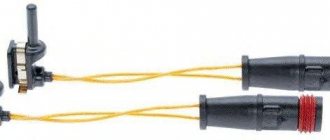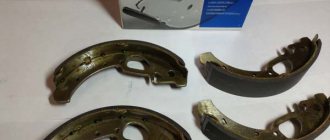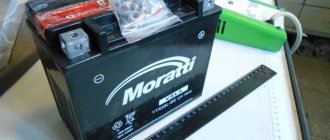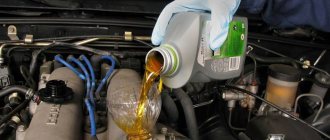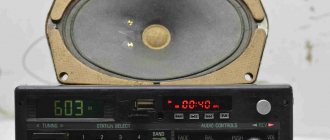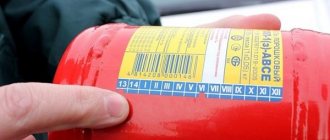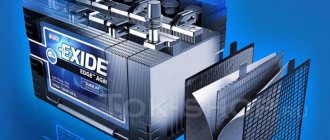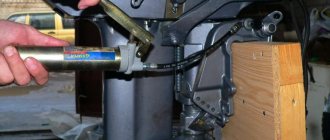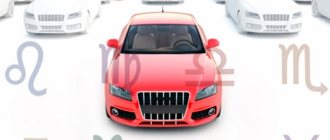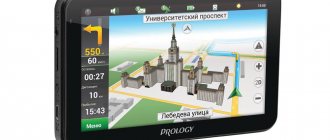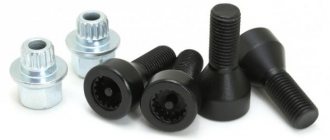The braking efficiency depends on the quality of the brake pads on the car. In most cases, during maintenance we install what is optimally priced. When there are only products suitable for your car from one manufacturer, then there is not much choice. Whether they are of high quality or not is verified in practice, which is not good. Let's figure out which brake pads are good and which ones are best avoided.
General information
I would like to immediately note that you need to choose not only depending on the manufacturer, but also be guided by your driving style. While one type is suitable for quiet driving around the city, it is highly not recommended to use it for aggressive driving.
You can understand for yourself which brake pads are good and which are bad only through practice. That is, we buy and test. Not the best approach, but the most revealing. However, if you stumble upon a low-quality product, you may not brake in time. For example, the lining on the block fell apart due to high temperature. This can only happen on a low quality product. In order not to experiment, it is advisable to adhere to some simple rules when choosing and purchasing. We'll talk about this next.
TRW brake pads
TRW СOTEC - pads with a special silicone coating, which increases the efficiency of contact between the disc and the pad, which allows you to reduce the braking distance of the car at the brake grinding stage to 5 meters. Even after 2 thousand km. TRW brake pads look like new. The car behaves stably when braking, the pedal is pressed softly, and there is no unpleasant smell in the cabin. The pads work out their service life to the fullest. The price/quality ratio is ideal. For expensive foreign cars they buy them.
Some cars experience whistling, squeaking and unpleasant sounds. The situation worsens precisely at moments of overheating, so reckless drivers should not use products from this brand. It is better to buy them for a quiet ride around the city. Despite the high reliability, quality and efficiency of original TRW brake pads, the presence of a large number of counterfeits seriously reduces the authority of this brand. When purchasing TRW products, you must carefully check the parts for authenticity so as not to end up with low-quality counterfeit products.
We looked at 5 brands. Now you know how to choose brake pads and which ones are best suited to your foreign car.
Main types of brake pads
Over the many years of mechanical engineering development, all vehicle systems have been constantly improved. This also applies to brakes. Car speeds increased, internal combustion engines gained a huge amount of horsepower. If such a monster accelerates, it is quite difficult to stop it quickly. This led to the gradual development of pads.
The fact is that the pads are responsible for converting kinetic energy into thermal energy. It is easy to guess that upon contact with the brake disc, the temperature in the system increases significantly. It is partially taken up by the brake fluid. But the pads still get very hot. The engineers faced a not so simple task - to achieve efficient operation over a wide temperature range. This can be done by changing the composition of the lining.
Photo of brake pads
Which winter tires to choose - features of choice and rating of the best models of 2019 (145 photos and videos)
Which shock absorbers are better: review of the best models and recommendations for their use (115 photos)
Which battery is best for a car - recommendations on how and which battery to choose for your car (135 photos)
Read here! Which alloy wheels are better: a review of the best manufacturers and recommendations on how to choose the right model (135 photos)
Semi-metallic brake pads
This is one of the most common and affordable types of pads. In addition, it was used for quite a long time and had no alternatives. A little later, ceramic ones appeared, but that’s not about that now. There is no need to talk about which brake pads are better. If semi-metallic is of high quality, then they have the following advantages:
- wear-resistant;
- high heat transfer rates.
The disadvantages include the following:
- increased noise during operation;
- reduce the service life of the brake disc.
The composition of the friction lining includes ferrous and non-ferrous metals. Their number can vary and reach 65%. To improve performance characteristics, inorganic fillers and graphite are used. Such pads are not suitable for use in northern regions, since their performance at low temperatures is significantly reduced.
Bosch brake pads
These brake pads practically do not wear out and brake very quickly. Even car mechanics come to the conclusion that this is the golden mean. The pads of this brand serve well and will not cause problems for two years of active use (600 km). They can be chosen for cars of any brand. Minimal wear, durability and reasonable cost (slightly higher than Chinese counterfeits) are the direct advantages of Bosch pads. When running in, they do not creak, the disc remains clean. Instructions are included with the product upon purchase.
Despite this, the sound is sometimes encountered loudly when braking (at traffic lights, changing speeds, turning). More often this may occur due to disc incompatibility. When they overheat, they begin to creak, a creaking sound is clearly audible.
Brake pads from Masuma
This Japanese company mostly produces semi-metallic brake pads. This is more of a common standard in Japan, as they are very popular there. So, if we talk about what good brake pads with a semi-metallic friction layer are, then these are definitely “Masuma”. The products are neither cheap nor expensive. Something between the original and outright “Chinese”. But they have a large number of positive reviews and have long been tested in practice.
It is quite simple to check whether a product is really from a given manufacturer and is semi-metallic. To do this, just run your finger along the friction lining. There will be a black imprint on your hand. These pads get very dirty.
ATE brake pads
This is a more economical option that has normal quality indicators. Truly the best representative in the price-quality rating. However, ATE brake pads can cause problems if they overheat. It has also been noticed that after the end of their service life they “eat up” the disks. If the temperature is normal (no overheating), the ATEs work well, react quickly, do not generate dust or whistle.
In general, ATE brake pads are used on cars such as Ford, VW, BMW, Skoda, Toyota, Audi, Mrecedes. These pads will provide high braking efficiency, ECE R90 standards.
About organic brake pads
Until approximately 1970, asbestos was actively used in the manufacture of the friction layer. A unique material in terms of its characteristics for the brake system. There would be no problems if it were not for the health damage caused by asbestos. Today it is banned, but organic pads are in good demand. No more than 30% metal is used there. In addition, there are inclusions such as Kevlar, resin and carbon with rubber.
If we talk about which brand of brake pads is better in this category, then we should give preference to SEI. She produces products of the highest level. True, their cost is appropriate. There is a separate type of organic pads Low-Metallic NAO. Their essence lies in the increased metal content, which improves heat transfer. Well, now let's go further and look at a few more popular types of pads.
Brake pad rating
To compile the most objective rating of various brands of pads, a team of testers, which included representatives of the Center for Independent Expertise, Autoreview and AvtoVAZ testers, used pads from different companies and in different price categories, not excluding Russian ones:
- Germany – ATE, Best, Bosch;
- Russia – STS, VATI, EZATI, TIIR, Polyhedron;
- UK – Ferodo, AP Lockheed, Lucas, QH;
- Ukraine – DAfmi, Trans Master;
- Hungary – Rona;
- Italy – Samko;
- Denmark – Roulunds.
As for testing, it was carried out at different stands in order to simulate various operating conditions. In addition, all pads have undergone preliminary running-in. Test conditions:
- Hot braking – from 100 km/h. In this case, the pads and discs were preheated to 200 °C by braking (continuous).
- Cold braking – from 100 km/h to a stop. The disc and brake pads were cold (less than 50 °C).
- Cooled down braking – from 100 km/h. A special feature of the test is that the tests take place after the end of cyclic braking, but only when the braking system on the stand has naturally cooled down to ambient temperature.
- Mountain cycle - from 100 to 50 km/h, subject to repeated cyclic braking. There are 2 series of braking with 25 presses each, and the results are taken only from the 50th braking. This method allows you to fully simulate movement on serpentines and mountain roads.
Video: Lifetime of ATE front brake pads - personal experience
Test results
Hot braking
In this category, brake pads from the following companies demonstrated good results:
- ATE – 0.47 units;
- Rona – 0.45 units;
- Roulunds – 0.44 units;
- STS – 0.41 units.
On the other hand, the company's products completely failed the test:
Thus, they could not show even average parameters. But the Lockheed APs performed worst of all, which had to be completely removed from the stand from sparks.
Cold braking
In this category, the situation has changed to the opposite. Samko pads, which failed the last test, unexpectedly gave an excellent result. The list of leaders is as follows:
- QH – 0.63 units;
- Samko – 0.60 units;
- ATE – 0.58 units;
- Roulunds – 0.55 units;
- Lucas – 0.53 units.
Russian and British products performed worst of all:
- TIIR – 0.39 units;
- VATI – 0.35 units;
- AP Lockheed – 0.23 units.
Cooled down braking
Here the top three companies were:
As for the average results, they were shown by the following:
- ATE and Roulunds – 0.48 units each;
- VATI and STS – 0.47 units each;
- Best, EZATI and Bosch – 0.46 units each;
- Lucas and Trans Master – 0.45 units.
Other pads also showed normal results, although slightly lower. However, not a single company allowed an outright failure, with a minimum normal result of 0.33 units.
Mountain cycle
Imitation of driving along serpentines and mountain roads gave the following figures:
- Rona – 0.44 units, and they showed a heating temperature of up to 230 °C, which is very good;
- QH and ATE – 0.43 units each;
- Best – 0.43 units, at 250 °C;
- Roulunds – 0.41 units;
- VATI – 0.40 units, at 230 °C;
- STS – 0.38 units. at 230 °C;
- Trans Master – 0.38 units. at 260 °C;
- Samko and Bosch – 0.36 units, at 260 °C.
The outsider was the English AP Lockheed, from which sparks began to fly again.
Ceramic products
If we talk about which front brake pads are better for a sports car, then definitely ceramic ones. Of course, they cost a lot of money, but they have unique properties. Firstly, they do not pollute the environment. This is due to the fact that environmentally friendly materials are used in their production: ceramics, rubber, and a small amount of non-ferrous metals. Secondly, durability. Such pads can last about 100,000 kilometers on a regular car. Of course, they are installed mostly on supercars. A brake disc made of composite materials is also required. Such a system is very productive, but very expensive.
The most popular ceramic manufacturers today are EBC, Hawk, and ARCE. The pads usually cost more than 10-15 thousand rubles, but they last an extremely long time. Please note that they require pre-heating to operate effectively.
How to choose brake pads
When choosing brake pads, you need to focus on the brake discs installed on cars. It is desirable that they be of the same series, brand, or similar in composition of interacting elements.
When choosing brake pads, it is better to avoid purchasing products of the third category, which are not of high quality.
There are many fake brake pads known by the brand on the Russian market, so when choosing a part it is recommended:
- Purchase pads from specialized automotive stores.
- When purchasing, inspect the block to ensure that there are no foreign bodies on its lining.
- Look at the “papers” that are in the box with the product. Manufacturers usually include a parts passport, certificates, warranty card, etc. If you purchase pads of the first or second category, be sure to note that they must be certified with the 90R or R90 mark.
It is impossible to say unequivocally which brake pad manufacturers to choose. You should focus on the budget, the wheels installed on the car and the characteristics of a particular model. Among the leaders in the production of brake pads are the following manufacturers: Bosch, ATE, Ferodo, Brembo, Textar, Lucas, TRW, Remsa, PAGID. For Russian cars, you can consider installing STS brand brake pads.
( 16 votes, average: 4.69 out of 5)
Is it possible to drive a car if the shock absorber is leaking?
Zero vehicle maintenance
Related Posts
Which brake pads are best to choose?
An extremely important indicator is not only the cost, type of product or manufacturer, but the operating temperature. The fact is that usually the pads function at 250 degrees, if the driving is extreme, then 350 and higher. For sports cars and racing, ceramic pads are always chosen. They are able to withstand high temperatures for long periods of time. In other cases, organic matter will cope with the tasks. Although you can take a closer look at semi-metallic pads.
Another important indicator is the friction coefficient. If it changes for the worse depending on the temperature, then this is very bad. Typically, when temperatures are too high or low, performance drops significantly. It is better to buy original products. The coefficient of friction in them is ideally matched to your car and usually ranges from 0.35 to 0.5 units.
Do you need sports pads for the city?
In addition to the above criteria, it is worth paying attention to indicators such as operating temperature and friction coefficient. The driving style that is usually characteristic of the driver produces a certain temperature. To safely drive around the city, 350 degrees is enough. For sports driving, you need pads whose operating temperature is three times higher than normal. The same goes for the friction coefficient. During normal driving, standard pads will perform better.
Pads for Hyundai Solaris
This Korean-made car is one of the most popular in our country. Let's see which pads will suit him best. It is quite logical that the first place is occupied by the original called “Hyundai Mobis”. They are installed on the conveyor and please with their stability. The price of a pair of pads is about 3,500 rubles. Not everyone can afford this. In second place is Bosch from India, costing 2,200 rubles. The price tag here is already more humane. The pads do not rub in well and may make noise at first. Otherwise, a pretty good choice for moderate driving.
Finwhale V1017 takes an honorable third place in our ranking. These are German pads that provide stable braking, but do not like heat. They cost approximately 1400 rubles. In general, Finwhale V1017 are good brake pads for Solaris. Which ones are better? Of course, the original ones, but even good analogues will serve no worse, so there is no particular point in paying more.
Remsa brake pads
Remsa brake pads are characterized by good geometry, reasonable price, moderate dustiness and softness. There is an anti-creaking feature, which contributes to silence when braking. They do not squeak, pinch, or rumble when turning (when braking, at traffic lights). This is one of the few best analogues that offers decent competition to the original brands. The discs remain safe and sound, even after wear. Best suited for moderate riding.
There are situations when, after 1.5 - 2 thousand km, the pads begin to emit a terrible squeak. But still, Remsa brake pads keep all the declared parameters.
For domestic cars
As for the VAZ family of cars, there is simply a huge selection. However, it is necessary to pay attention to the quality of the pads. For example, factory-made TIIRs installed on a conveyor belt are not the best choice. But the Ferodo in the red package brakes just fine. Of course, the service life of such pads is no more than 20,000 km with quiet driving. In addition, a large number of fakes have appeared recently, so you need to be careful.
TPW is also very popular. They are similar in price and technical characteristics to the Ferodo, but last much longer. If you want something more budget-friendly, then you can take ATE. They brake normally and don't get too hot. Of course, it’s up to you to decide which brake pads are best, but it’s better to avoid Chinese counterfeits.
Brembo brake pads
There are no complaints about the stated characteristics of Brembo brake pads. They do not generate dust, brake softly and silently, and do not damage the discs. Owners also note the attractive design and good performance of the equipment. If you have the money, we advise you to opt for this model.
Brembo is a global brand, in demand not only in our country, but also abroad. Each element of the pad is attached perfectly, so you don’t have to worry about certain parts falling off or becoming deformed. For the entire brake system to work perfectly, it is better to install all Brembo spare parts. Their cost is half that of the original, but the characteristics are at the highest level. It is better to install products in pairs rather than combine them with other manufacturers. Then they work perfectly and do not cause problems.
The main types of Brembo brake pads differ in the composition of the materials used - with a high carbon content (Carbon-Ceramic) are used mainly in difficult road conditions and based on metal powders with friction materials (Sintered) for city driving, ensuring stable operation at elevated temperatures and cleaning the discs from products formed as a result of friction. It is necessary to carefully approach the choice of brake pads, paying attention to the conditions of use of a particular model.
ABS and Allied Nippon pads
In 2020, a special rating was compiled that spoke about the popularity and effectiveness of brake pads from certain manufacturers. Founded in 1979, the first place was taken. Today this brand is one of the most popular. This is due to the high quality of the products. In addition, the company produces a full range of brake system parts for cars and trucks of European, American and Asian production.
Allied Nippon is another well-known manufacturer of brake system parts for heavy equipment and SUVs. True, today such pads are also installed on ordinary passenger cars. The company set a goal to increase the coefficient of friction and reduce wear. For this purpose, Fero Carbon technology was used. The essence is the inclusion of mineral metallic in the composition. In a car, the front axle is considered more loaded, while at the same time the rear brake pads are not subject to critical loads. You already know which ones are better. I would like to note that it is better to install more expensive pads on the front axle and not save money.
Brake pad categories
When choosing the best brake pads, you need to understand that there are three categories of these products:
- pads that are placed on a car on a conveyor belt (original or O.E.);
- pads that are sold on the market (non-original products or Aftermarket);
- pads for emerging markets.
Original brake pads meet high quality requirements. Very often their cost is 2-3 times different from the rest. Automobile manufacturers sell such products in original packaging, although third-party companies actually manufacture them. This means that it is quite possible to find exactly the same products in stores at a much more affordable price, but with a nameplate from another company.
Aftermarket brake pads or AfterMarket are the most popular products in stores, due to their lower cost compared to original products. This is due to the use of lower quality materials.
Pads exported to developing countries are of lower quality and use even cheaper materials. They are manufactured taking into account the regulations and requirements that apply in the countries where they are planned to be sold. The price for pads from such companies is usually 20-30% of the price for pads of the first category (original).
Regardless of which category the product you choose belongs to, the pads must have markings indicating the coefficient of friction and operating temperature.
Let's sum it up
So we figured out which brake pads are better. VAZ, for example, is more often equipped with domestically produced products. If the pads are not fake, then the quality is at the proper level. But even here there is a chance of stumbling upon a fake. “Which front brake pads are best?” - you ask. The answer is quite simple. The most optimal products are those that pass critical tests perfectly. For example, the same “ABS” is an excellent choice for a moderate driving style.
In principle, almost all Japanese-made pads are of good quality. For example, it's worth taking a look at Nisshinbo or Kashiyama. Almost all spare parts from Japan are famous for their durability. This also applies to pads, which usually run well for quite a long time.
All tests and experiments show that the original is the most preferable. Moreover, this does not depend on the make of the car and the year of its production. If 10 years ago Ford was equipped with semi-metallic pads from a certain manufacturer, then it is better to leave everything as is. Yes, sometimes it's expensive, but it's worth it. If you are not a fan of aggressive driving, then you can take a more or less sane analogue. As you can see, there are more than enough of them today. But even here you need to be able to make the right choice. Thematic forums, where people have experienced the quality of a particular product first-hand, can help you with this. What are good brake pads? Those that do not creak during and after break-in, withstand high temperatures and are wear-resistant. These are usually semi-metallic brake pads. Which company is better? This is not so important, preferably original or a European analogue. It is always advisable to avoid China.
